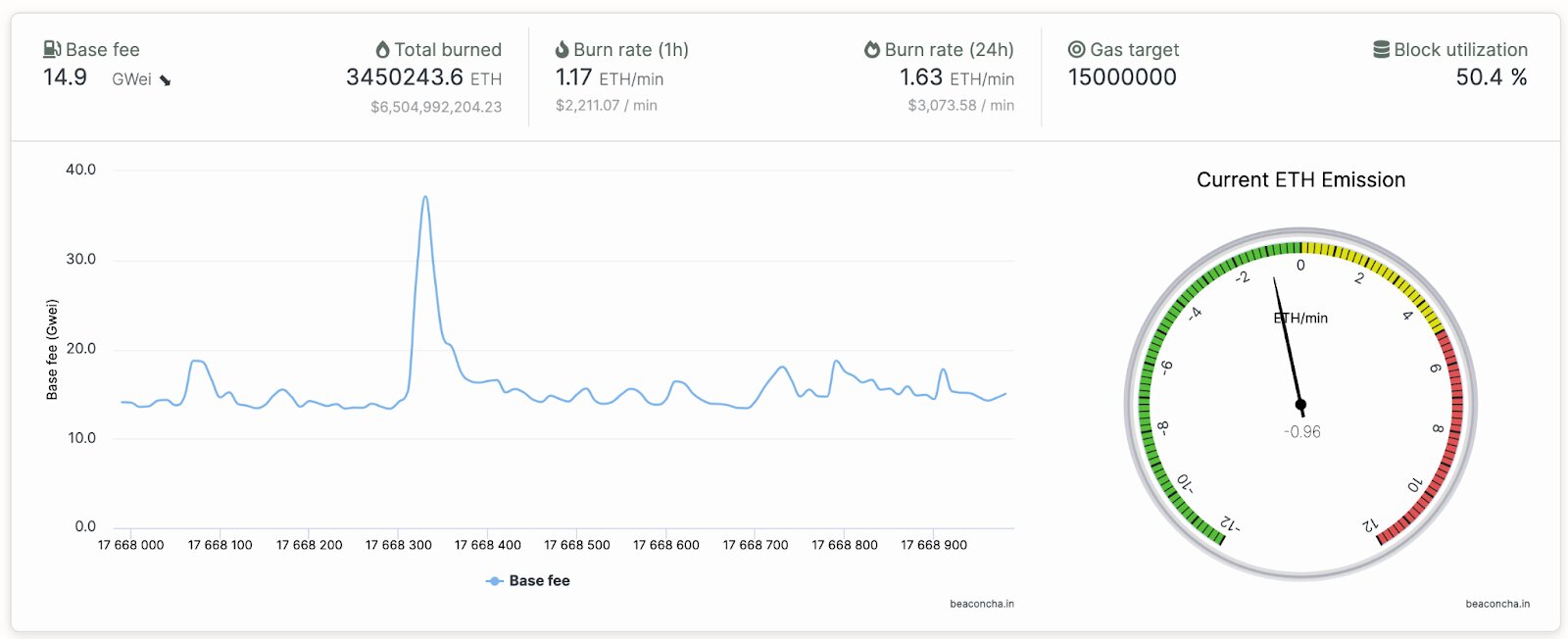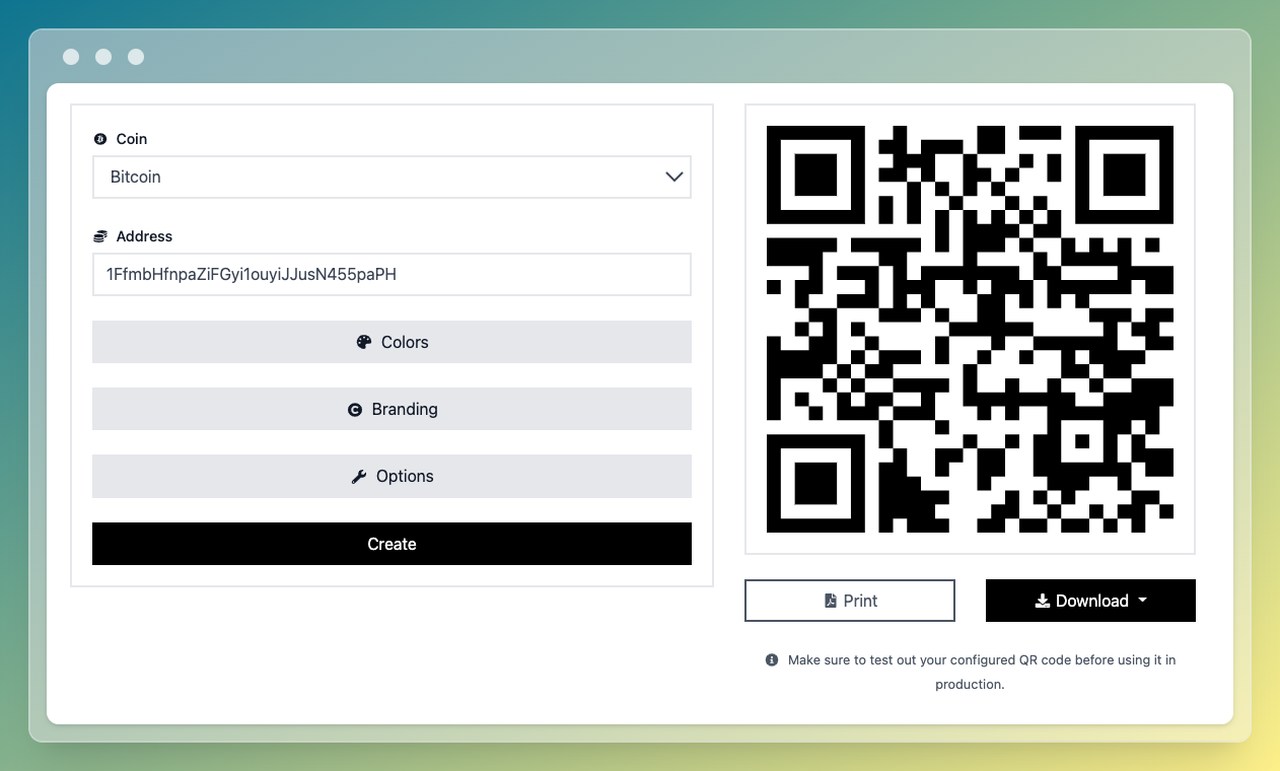Overview of Blockchain Technology
Blockchain technology, often referred to simply as blockchain, is a revolutionary concept that has gained significant attention in recent years. It is a decentralized and immutable ledger system that allows for secure and transparent transactions. By eliminating the need for intermediaries, blockchain technology has the potential to revolutionize various industries, including finance, supply chain management, and healthcare.
At its core, a blockchain is a distributed database that is shared among multiple participants in a network. Each participant, or node, has a copy of the entire blockchain, which contains a chronological record of all transactions ever executed. This decentralized nature ensures that no single entity can control or manipulate the data, making blockchain highly resistant to hacking and data manipulation.
One of the key principles of blockchain technology is transparency. Every transaction recorded on a blockchain is visible to all participants in the network. This transparency allows for increased trust and accountability, as it is virtually impossible to tamper with or alter the data once it has been recorded on the blockchain. Additionally, blockchain transactions are typically irreversible, providing an additional layer of security.
Another fundamental feature of blockchain technology is its ability to create consensus among participants. In a traditional centralized system, a central authority validates and approves transactions. In contrast, blockchain uses consensus algorithms, such as Proof of Work (PoW) or Proof of Stake (PoS), to ensure that all participants agree on the validity of transactions. This decentralized consensus mechanism eliminates the need for intermediaries, reducing costs and increasing efficiency.
Blockchain technology has gained significant traction in the realm of cryptocurrency. Bitcoin, the first decentralized digital currency, is built on blockchain technology. Blockchain allows for the secure transfer of digital assets, such as cryptocurrencies, without the need for a central authority. This has opened up new possibilities for peer-to-peer transactions, bypassing traditional financial institutions.
Furthermore, blockchain has the potential to address various challenges in the financial industry, such as reducing fraud, improving efficiency, and enhancing financial inclusion. The immutability and transparency of blockchain make it an ideal solution for creating trust in financial transactions.
Overall, blockchain technology is poised to disrupt multiple industries by providing secure, transparent, and decentralized solutions. As more organizations recognize its potential, we can expect to see widespread adoption of blockchain in the coming years. Blockchain has the power to revolutionize the way we conduct transactions and manage data, ultimately leading to a more efficient and trustworthy digital economy.
The Fundamentals of Blockchain
Blockchain is a decentralized and distributed ledger technology that underlies various applications, including cryptocurrencies like Bitcoin. Understanding the fundamentals of blockchain is essential to comprehend its potential and applications in different industries.
At its core, blockchain is a continuously growing list of records, called blocks, that are linked together using cryptography. Each block contains a timestamp, a unique identifier, and a reference to the previous block, forming a chain of blocks. This chain-like structure ensures the immutability and integrity of the data stored on the blockchain.
The key concept behind blockchain is decentralization. Unlike traditional systems where a central authority is responsible for maintaining records, blockchain relies on a network of participants, known as nodes, to verify and validate transactions. Each node holds a copy of the entire blockchain, ensuring transparency and removing the need for intermediaries.
Transactions within a blockchain are grouped into blocks and added to the chain through a consensus mechanism. The most common consensus algorithms used in blockchain networks are Proof of Work (PoW) and Proof of Stake (PoS). In PoW, miners compete to solve complex mathematical puzzles to add a new block to the chain, while PoS relies on participants who hold a certain number of tokens to create new blocks. These consensus mechanisms provide security and prevent fraudulent activities within the network.
Cryptography plays a vital role in ensuring the security of the blockchain. Transactions are secured using cryptographic algorithms, making them virtually impossible to modify or tamper with. Public-key cryptography is commonly used to verify the authenticity of transactions and ensure the privacy of participants involved.
One of the key advantages of blockchain is its transparency. All transactions recorded on the blockchain are visible to all participants in the network. This transparency builds trust among participants and enhances accountability. However, while the content of the transactions is transparent, the identities of the participants can be pseudonymous or anonymous, depending on the privacy features implemented within the specific blockchain network.
Overall, the fundamentals of blockchain revolve around decentralization, transparency, security, and consensus. Understanding these principles is crucial for leveraging blockchain technology effectively. As blockchain continues to evolve and expand its applications beyond cryptocurrencies, it has the potential to transform industries by offering secure, transparent, and efficient solutions.
Understanding the Role of Blockchain in Cryptocurrency
Blockchain technology has played a foundational role in the rise and success of cryptocurrencies. Cryptocurrencies, such as Bitcoin and Ethereum, utilize blockchain as a decentralized and transparent ledger system to enable secure digital transactions.
One of the key aspects of blockchain’s role in cryptocurrency is its ability to facilitate peer-to-peer transactions without the need for intermediaries, such as banks or financial institutions. Traditional financial transactions often involve multiple intermediaries, which can result in delays, fees, and potential vulnerabilities. Blockchain eliminates the need for intermediaries by securely recording and verifying transactions directly between parties, offering faster and more cost-effective transactions.
Blockchain technology also provides a solution to the double-spending problem that existed in digital currencies before its inception. Double-spending is the act of using the same digital currency for multiple transactions, which can lead to fraud. With the decentralized nature of blockchain, every transaction is recorded on a public ledger and verified by multiple nodes in the network. This ensures that each unit of currency can only be spent once, preventing fraudulent activity.
Furthermore, blockchain technology enhances the security and privacy of cryptocurrency transactions. Each transaction on the blockchain is encrypted using cryptographic algorithms, making it nearly impossible to alter or forge. Additionally, the use of public and private keys allows participants to maintain control over their digital assets while keeping their identities pseudonymous or anonymous.
The transparency of blockchain also plays a vital role in cryptocurrency. Every transaction recorded on the blockchain is visible to all participants, improving trust and accountability. This transparency enables users to trace the origin and destination of funds, discouraging illicit activities like money laundering. However, while the transactions are transparent, the identities of the individuals involved can remain anonymous or pseudonymous, providing a level of privacy.
Aside from facilitating transactions, blockchain technology enables the creation of new cryptocurrencies through a process called “tokenization.” Tokenization allows businesses and individuals to issue their digital assets or tokens on a blockchain. These tokens can represent various assets, such as real estate, intellectual property, or even ownership in a project or company. This innovation has opened up new opportunities for fundraising and investment, as well as the efficient transfer and tracking of assets.
In summary, blockchain technology is the backbone of cryptocurrencies, providing a decentralized, secure, transparent, and efficient platform for digital transactions. It eliminates the need for intermediaries, offers protection against double-spending, enhances security and privacy, and enables the creation of new digital assets. The role of blockchain in cryptocurrency has revolutionized the way we transact and hold assets, paving the way for a decentralized and inclusive financial future.
Decentralization and Transparency in Blockchain
Decentralization and transparency are two key principles that define the underlying architecture of blockchain technology. These principles contribute to the unique and transformative nature of blockchain and have far-reaching implications in various industries.
Decentralization is a fundamental aspect of blockchain, which means there is no central authority controlling the system. Unlike traditional centralized systems where a central entity, such as a bank or government, oversees transactions and maintains records, blockchain operates on a peer-to-peer network. The blockchain network consists of multiple nodes, each with a copy of the entire blockchain, ensuring no single point of failure or control.
Decentralization provides numerous benefits. It eliminates the need for intermediaries, such as banks or clearinghouses, reducing costs and increasing operational efficiency. Additionally, it enhances security by distributing data across multiple nodes. As a result, no single entity can manipulate or tamper with the blockchain, making it highly secure and resistant to hacking or fraudulent activities.
Transparency is another crucial aspect of blockchain technology. Every transaction recorded on the blockchain is visible to all participants in the network. This transparency ensures accountability and establishes trust among participants, as they can independently verify the authenticity and integrity of transactions without relying on a central authority.
The transparency of blockchain is achieved through the use of public ledgers. Every transaction is added to a block, which is then linked to previous blocks to form a chain of records. These records become part of a decentralized and immutable ledger that cannot be altered without the consensus of the majority of participants in the network.
While the content of transactions is transparent, the identities of the participants can vary. Some blockchain networks offer pseudonymity, where participants are identified by unique digital addresses instead of their real names. This pseudonymity provides a level of privacy while ensuring traceability and accountability.
The decentralization and transparency of blockchain have significant implications in various industries. In supply chain management, for example, blockchain can provide real-time visibility and traceability of products, ensuring the authenticity and origin of goods. It can also eliminate counterfeit products and streamline processes, benefiting both businesses and consumers.
In finance, blockchain enables peer-to-peer transactions without intermediaries, reducing costs and increasing accessibility. It also improves transparency in areas such as remittances and cross-border payments, preventing fraud and money laundering.
Moreover, decentralized applications (DApps) built on blockchain can enhance transparency and trust in areas such as voting systems, healthcare records, and intellectual property management.
Overall, the decentralized and transparent nature of blockchain technology offers immense potential to revolutionize various industries. It empowers individuals, enhances security, and promotes trust and accountability among participants. As blockchain continues to evolve, these principles will continue to shape its transformative impact in the future.
The Components of a Blockchain
A blockchain is composed of various key components that work together to ensure the integrity, security, and decentralization of the system. Understanding these components is essential to grasp the inner workings of blockchain technology.
1. Blocks: A blockchain is made up of blocks, which are containers that hold a collection of transactions. Each block contains a unique identifier, a timestamp, and a reference to the previous block, creating a chain-like structure.
2. Transactions: Transactions are the records of the exchange of value or information that are recorded on the blockchain. These can include monetary transactions, smart contracts, or any other type of digital interaction that is deemed valid for the particular blockchain application.
3. Hash Functions: Hash functions play a critical role in blockchain. They are cryptographic algorithms that transform input data, such as transaction details, into a fixed-length string of characters called a hash. These hash functions provide security to the blockchain, making it almost impossible to modify a block without being detected.
4. Consensus Mechanisms: Consensus mechanisms are protocols used to achieve agreement among the participants of the blockchain network. They ensure that all nodes in the network agree on the validity of transactions and the order in which they are added to the blockchain. Popular consensus mechanisms include Proof of Work (PoW), Proof of Stake (PoS), and Delegated Proof of Stake (DPoS).
5. Nodes: Nodes are individual computers or devices that participate in the blockchain network. Each node has a copy of the entire blockchain and validates transactions according to the consensus rules. Nodes can be divided into different types, such as full nodes, which validate all transactions, and light nodes, which only store a subset of the blockchain.
6. Public and Private Keys: Public-key cryptography is a fundamental component of blockchain. It involves the use of public and private keys. Public keys are cryptographic identifiers that are shared openly, while private keys are kept secret by the individual. The combination of both keys allows for secure and verifiable transactions on the blockchain.
7. Network: The network refers to the collection of nodes that are connected and communicate with each other. This network allows for the distribution of the blockchain across multiple nodes, ensuring redundancy, decentralization, and consensus.
8. Smart Contracts: Smart contracts are self-executing contracts with predefined rules and conditions encoded on the blockchain. They automatically execute the terms of the contract once the conditions are met. Smart contracts eliminate the need for intermediaries and provide transparency, security, and efficiency in various areas, such as supply chain management and decentralized finance.
By combining these components, blockchain technology enables secure, transparent, and decentralized systems that have the potential to transform various industries. Understanding the intricacies of these components is crucial to unlocking the full potential of blockchain technology.
How Blockchain Manages and Secures Data
Blockchain technology employs several mechanisms to effectively manage and secure data, ensuring the integrity, transparency, and decentralization of the system.
Decentralized Ledger: Unlike traditional centralized databases, blockchain stores data across a network of nodes. Each node maintains a copy of the entire blockchain, ensuring redundancy and eliminating the need for a single point of failure. This decentralized nature of blockchain prevents data loss and makes it highly resilient to attacks.
Timestamping and Immutable Records: Every transaction added to the blockchain is timestamped and linked to previous transactions, creating an immutable record. Once a block is added to the blockchain, it cannot be altered or deleted without consensus from the majority of participants. This immutability ensures the integrity and permanence of the data stored on the blockchain.
Cryptographic Hash Functions: Blockchain utilizes cryptographic hash functions to secure data. These hash functions generate unique alphanumeric strings, which serve as digital fingerprints of the data. Any change in the data will result in a different hash value, making it easy to detect tampering or manipulation.
Distributed Consensus: Blockchain achieves consensus among network participants through various consensus mechanisms, such as Proof of Work (PoW) or Proof of Stake (PoS). Consensus ensures that all nodes agree on the validity of transactions and the order in which they are added to the blockchain. By achieving consensus, blockchain ensures that only valid and verified data can be added to the ledger.
Encryption: Blockchain employs encryption techniques to secure data. Public-key cryptography allows participants to have a unique set of public and private keys. Transactions are signed using private keys, and the digital signature is verified using corresponding public keys. This ensures that only authorized parties can access and modify the data on the blockchain.
Transparency and Auditability: Every transaction recorded on the blockchain is visible to all participants in the network. This transparency enhances trust and accountability. Participants can independently verify and audit the data, ensuring its accuracy and preventing fraudulent activities. However, while the content of transactions is transparent, the identities of the participants can remain pseudonymous or anonymous, depending on the privacy features implemented.
Off-Chain Data Storage: While the transaction data is stored on the blockchain, large or sensitive data can be kept off-chain. The blockchain can store reference pointers or hashes to this data, ensuring the security and scalability of the system. Off-chain storage allows for more efficient use of resources while still maintaining the necessary data integrity and security.
These various mechanisms work in synergy to ensure the robustness and security of data in a blockchain. By combining decentralization, immutability, cryptography, consensus, and transparency, blockchain technology provides a highly reliable and tamper-proof system for managing and securing data.
Key Features and Benefits of Blockchain
Blockchain technology offers numerous features and benefits that make it a disruptive and transformative innovation across various industries. Understanding these key features and benefits is crucial to fully comprehend the potential of blockchain.
Decentralization: One of the fundamental features of blockchain is its decentralized nature. Instead of relying on a central authority, blockchain operates on a peer-to-peer network of nodes that collectively maintain and validate the blockchain. This decentralization eliminates the need for intermediaries and enhances security, transparency, and trust among participants.
Security: Blockchain employs a range of security measures to protect data and transactions. The use of cryptographic algorithms ensures that data is securely stored and transmitted, making it extremely difficult for unauthorized parties to tamper with or alter the information on the blockchain. The decentralized nature of blockchain also adds an additional layer of security by eliminating the vulnerability of a single point of failure.
Transparency: Transparency is a defining characteristic of blockchain technology. Every transaction recorded on the blockchain is visible to all participants, creating a transparent and auditable system. This transparency reduces the risk of fraud and increases trust among participants, as the information cannot be easily manipulated or hidden.
Immutability: The immutability of blockchain ensures that once a transaction is recorded, it cannot be altered or deleted. This characteristic is achieved through cryptographic hash functions and the consensus mechanism of the blockchain network. Immutability provides a trustworthy and tamper-proof record of transactions, making blockchain particularly useful for applications that require data integrity and traceability.
Efficiency and Cost Savings: By eliminating the need for intermediaries and streamlining processes, blockchain technology offers increased efficiency and cost savings. It reduces the dependence on manual and paper-based processes, automates trust, and minimizes the risk of human error. Transactions can be executed faster, and the need for reconciliation or third-party verification can often be eliminated. These efficiencies lead to cost savings and improved overall operational efficiency.
Traceability: Blockchain provides a comprehensive and auditable trail of transactions. Each transaction is linked to previous transactions, creating a transparent and traceable record of the entire transaction history. This feature is particularly valuable in supply chain management, where stakeholders can verify the authenticity and origin of products, ensuring compliance with regulations and preventing fraud.
Enhanced Privacy: While blockchain offers transparency, it also provides privacy features to protect sensitive information. Participants in a blockchain network can maintain pseudonymous or anonymous identities, using cryptographic keys to interact on the blockchain securely. This privacy feature allows for secure transactions while preserving the confidentiality of individual participants.
Trust and Accountability: Blockchain technology enhances trust and accountability by eliminating the need for trust in a central authority. Transactions on the blockchain are verified and validated by multiple participants in the network, reducing the risk of fraudulent activities. The transparency and immutability of blockchain create a system in which participants can independently verify and audit transactions, fostering trust and accountability in digital interactions.
Innovation and Disruption: The inherent characteristics of blockchain technology have paved the way for innovation and disruption across various industries. Blockchain has already shown significant potential in areas such as finance, supply chain management, healthcare, and voting systems. It enables the creation of new business models, facilitates peer-to-peer interactions, and opens up opportunities for decentralized applications and smart contracts.
Overall, the key features and benefits of blockchain, including decentralization, security, transparency, efficiency, traceability, privacy, trust, and innovation, position it as a groundbreaking technology with vast potential for revolutionizing industries and shaping the future of digital interactions.
Common Misconceptions about Blockchain Technology
While blockchain technology has gained significant attention and recognition, there are still several misconceptions that surround it. It is important to address these misconceptions to have a clear understanding of the true capabilities and limitations of blockchain.
1. Blockchain is the same as Bitcoin: One of the most common misconceptions is that blockchain and Bitcoin are synonymous. While Bitcoin was the first application of blockchain technology, blockchain itself is a broader concept that can be used for various purposes beyond cryptocurrencies. Blockchain can be applied to areas such as supply chain management, healthcare, voting systems, and more.
2. Blockchain is completely anonymous: While blockchain provides pseudonymity and privacy features, it is not entirely anonymous. Transactions on the blockchain are visible to all participants, and while the identities of participants can be kept private, the transaction history can be traced. Blockchain offers a level of privacy, but it is crucial to understand that complete anonymity is not guaranteed.
3. Blockchain is only useful for financial transactions: While blockchain gained prominence through its application in cryptocurrencies, its potential extends far beyond finance. Blockchain technology can be utilized in supply chain management to enhance transparency and traceability, in healthcare to improve the security and privacy of patient data, and in various other sectors where trust, transparency, and decentralized systems are valuable.
4. Blockchain is infallible and unhackable: While blockchain is considered highly secure, it is not immune to vulnerabilities. While the consensus mechanism and cryptographic protocols make it extremely difficult to tamper with data, there have been cases of blockchain hacks and exploits. The security of a blockchain network depends on factors such as the consensus algorithm, network size, and security practices implemented.
5. Blockchain is a solution for all problems: While blockchain has the potential to address many challenges, it is not a one-size-fits-all solution for every problem. Implementing blockchain requires careful consideration of the specific use case, technical feasibility, scalability, and cost-effectiveness. Not all problems require a decentralized and consensus-based solution that blockchain provides.
6. Blockchain is too slow and resource-intensive: Blockchain transactions can be slower compared to traditional centralized systems. The decentralized nature of blockchain requires consensus among multiple nodes, which can introduce latency. However, advancements such as second-layer solutions and improvements in consensus mechanisms are being developed to address scalability issues, making blockchain more efficient and scalable.
7. Blockchain is only for tech-savvy individuals: While blockchain technology can be complex, there are efforts to make it more accessible to a wider audience. User-friendly interfaces, development tools, and educational resources are continuously being developed to bridge the gap and enable individuals with varying levels of technical expertise to utilize and interact with blockchain applications.
By dispelling these misconceptions, we can gain a more accurate understanding of blockchain technology and its potential. While blockchain offers numerous benefits and transformative capabilities, it is essential to approach it with awareness of its limitations and to determine whether it is the appropriate solution for a specific use case.
Real-World Applications of Blockchain in Cryptocurrency
Blockchain technology has found extensive applications in the world of cryptocurrency, transforming various aspects of digital transactions, financial systems, and beyond. The following are some real-world applications where blockchain has made a significant impact in the cryptocurrency ecosystem.
1. Digital Currencies: The most obvious and prominent application of blockchain in cryptocurrency is the creation and use of digital currencies like Bitcoin and Ethereum. Blockchain provides a decentralized and transparent platform for secure peer-to-peer transactions, eliminating the need for intermediaries like banks or financial institutions.
2. Cross-Border Payments: Blockchain enables fast and cost-effective cross-border transactions. By removing intermediaries and utilizing digital currencies, blockchain reduces the complexity and fees associated with traditional cross-border payments. It allows for near-instantaneous settlement, eliminating the delays caused by traditional banking systems.
3. Remittances: Blockchain has significantly impacted the remittance market, particularly for individuals sending money to countries with limited banking infrastructure. By leveraging blockchain and cryptocurrencies, remittance services can offer lower fees, faster transactions, and improved financial inclusion for underserved populations.
4. Tokenization and Asset Management: Blockchain technology allows for the tokenization of various assets, such as real estate, art, and commodities. This enables fractional ownership and improved liquidity, making it easier to buy and sell assets. It also simplifies the transfer of ownership and enhances transparency in asset management.
5. Decentralized Exchanges (DEX): Blockchain technology has facilitated the development of decentralized exchanges. These exchanges operate on the blockchain, eliminating the need for intermediaries and providing users with full control over their funds. Users can trade cryptocurrencies directly with peer-to-peer transactions, enhancing security and reducing the risk of hacks or theft.
6. Smart Contracts and DApps: Blockchain enables the development of self-executing smart contracts on decentralized platforms. Smart contracts automatically execute predefined terms and conditions when specific conditions are met. DApps (decentralized applications) built on blockchain leverage smart contracts to enable various functionalities, ranging from decentralized finance (DeFi) to gaming and identity verification.
7. Supply Chain Management: Blockchain has revolutionized supply chain management by providing transparent and traceable transactions. By utilizing blockchain, supply chain participants can track the movement of goods, verify the authenticity of products, and greatly reduce counterfeit items. Blockchain ensures accountability and trust along the entire supply chain, enhancing efficiency and reducing costs.
8. Voting Systems: Blockchain technology has the potential to enhance the transparency and security of voting systems. By recording votes on the blockchain, it becomes extremely difficult to manipulate or alter election results. Blockchain-based voting systems can improve the integrity of elections, ensuring fairness and trust in the democratic process.
These real-world applications of blockchain in cryptocurrency demonstrate the transformative power and versatility of blockchain technology. From digital currencies to decentralized exchanges, smart contracts to supply chain management, blockchain is reshaping traditional systems and opening up new possibilities for secure, transparent, and efficient digital transactions.
The Future of Blockchain Technology
The future of blockchain technology holds immense potential for innovation, disruption, and widespread adoption across various industries. As the technology continues to evolve and mature, several key trends and developments are shaping the future of blockchain.
Scalability: Scaling blockchain networks to handle a higher volume of transactions remains a crucial focus for the future. Solutions such as second-layer protocols, sharding, and consensus algorithm improvements are being explored to enhance scalability without compromising security or decentralization. These advancements will enable blockchain to support more widespread adoption and handle the demands of large-scale applications.
Interoperability: Achieving interoperability between different blockchain networks is a key area of development. Currently, most blockchains operate as separate ecosystems, hindering the seamless transfer of assets and information between networks. Standardization efforts and protocols like cross-chain communication protocols are being developed to facilitate interoperability, allowing for a more connected blockchain ecosystem.
Enterprise Adoption: Blockchain technology is gaining traction in the enterprise world, with numerous industries exploring its potential. From supply chain management to finance, healthcare to logistics, enterprises are recognizing the efficiency, transparency, and security benefits of blockchain. As more robust and enterprise-friendly blockchain solutions emerge, we can expect increased adoption by businesses seeking to streamline operations, reduce costs, and enhance trust.
Regulatory Frameworks: Governments and regulatory bodies are increasingly recognizing the importance of blockchain and digital assets. Efforts are being made to establish clear regulations and frameworks that address concerns such as consumer protection, privacy, anti-money laundering, and taxation. Well-defined regulatory frameworks can provide clarity and confidence to businesses and investors, fostering greater adoption and utilization of blockchain technology.
Integration with Emerging Technologies: Blockchain is poised to be integrated with other emerging technologies to unlock new possibilities. Integration with artificial intelligence (AI), Internet of Things (IoT), and cloud computing can yield innovative solutions. For example, AI-powered smart contracts, IoT devices with blockchain-based identity systems, and cloud-based blockchain platforms can drive efficiency, automation, and trust in various industries.
Sustainability and Energy Efficiency: As blockchain networks consume significant energy, there is a growing demand for more sustainable and energy-efficient solutions. Efforts are being made to develop consensus algorithms, like Proof of Stake (PoS), that require less energy consumption compared to the energy-intensive Proof of Work (PoW). Additionally, initiatives are being undertaken to leverage renewable energy sources for blockchain mining and reduce the environmental impact associated with blockchain operations.
Privacy and Security Enhancements: Further advancements in privacy techniques and cryptographic protocols are expected to enhance the privacy and security features of blockchain. Technologies such as zero-knowledge proofs, ring signatures, and secure multi-party computation can enhance confidentiality while maintaining the transparency and accountability that blockchain offers.
Blockchain as a Service (BaaS): Blockchain as a Service is gaining popularity, allowing organizations to develop, deploy, and manage blockchain networks without the need for extensive technical expertise and resources. BaaS platforms and solutions simplify the adoption and implementation of blockchain technology, making it more accessible for businesses of all sizes.
The future of blockchain technology is filled with possibilities that can reshape industries, redefine trust, and unlock new economic models. As blockchain continues to mature and overcome challenges, its real-world applications will become more prevalent, leading to a decentralized, transparent, and efficient future.
Conclusion
Blockchain technology has emerged as a transformative force, revolutionizing the way we transact, store, and manage data. Its decentralized nature, transparency, security, and efficiency offer significant advantages across various industries, particularly in the realm of cryptocurrency. Through its key features such as decentralization, transparency, and immutability, blockchain has fostered trust, eliminated intermediaries, reduced costs, and enhanced security in digital transactions.
While blockchain technology initially gained prominence with Bitcoin, its applications extend far beyond digital currencies. Blockchain has found real-world use cases in supply chain management, finance, healthcare, voting systems, and more, offering transparency, traceability, and increased efficiency in these sectors. It has the potential to disrupt traditional systems, eliminate fraud, enhance financial inclusion, and usher in a new era of decentralized systems.
However, misconceptions surrounding blockchain persist. It is crucial to address these misconceptions, such as equating blockchain with Bitcoin or considering it infallible and unhackable. Understanding the true capabilities and limitations of blockchain is essential for its successful implementation and adoption.
The future of blockchain technology is bright, with continued advancements in scalability, interoperability, enterprise adoption, regulatory frameworks, and integration with other emerging technologies. As blockchain continues to evolve, it will likely shape industries, business models, and interactions in ways we have yet to fully comprehend.
In conclusion, blockchain technology has the potential to pave the way for a more decentralized, transparent, and efficient future. By leveraging the key features and benefits of blockchain – decentralization, transparency, security, and efficiency – we can unlock new opportunities, enhance trust, and revolutionize various industries. As blockchain continues to evolve and overcome challenges, its impact will continue to grow, reshaping the digital economy and transforming the way we interact and conduct transactions.

























